Sme Turntables
- Thread starter 108CY
- Start date
You are using an out of date browser. It may not display this or other websites correctly.
You should upgrade or use an alternative browser.
You should upgrade or use an alternative browser.
I owned the SME 10, SME 20/2, and now the SME 30/2. I know the stretch SME 20/12 was considered an upgrade over the stock 20/2, it had better stiffness and heavier platter, I don't know about the SME 20/3, which may be primarily just an upgrade to the motor unit. I know I read somewhere that some SME owners went back to the 2 version motor controller, but no reason given, the 3 motor controller is pretty cool looking.
I would suspect you would experience a serious upgrade going to the SME 30/12 from any version of the SME 20 with the same tonearm and cartridge, even with a nine inch arm. SME states that the 30/12 is significantly stiffer than the 30/2(3) and more mass with a heavier platter over the 30/2(3). SME 30/12 has a larger footprint, however.
My experience going from the 20/2 to the 30/2 was a more massive, deeper, wider smoother, more stable and more detailed presentation with the same arm/cartridge/phono stage. However, the "stretch" 20/12 is supposed to be the best deal overall with its heavier platter over the 20/2(3), kind of "half way" between the 20/2(3) and the SME 30/2(3).
SME stands for Scale Model Engineering, as I recall, and from the three SME decks I have owned, I would say they also do a pretty precise job of scaling price to performance.
Me, I am happy with my SME 30/2, it's a legacy turntable, purely mechanical, easy to set up and enjoy without pumps and fussing and has a reasonably compact footprint. Most SME bashers seem to have motives of secondary gain or flavor of the month comparison envy or haven't actually listened to the decks much. SME used to be one of the high price spreads, now with the escalating prices of high end decks, they have become something of a value leader, go figure.
Arms to try with any of them would be the Graham Phantom variations or Da Vinci tonearms to compare with the SME arms. I use a Da Vinci tonearm tonearm with my SME and find it to be a fantastic combo over the SME IV VI I used previously. I managed to shoe horn/jury rig a 10 inch Da Vinci arm onto the 30/2 with appropriate overhang.
I would suspect you would experience a serious upgrade going to the SME 30/12 from any version of the SME 20 with the same tonearm and cartridge, even with a nine inch arm. SME states that the 30/12 is significantly stiffer than the 30/2(3) and more mass with a heavier platter over the 30/2(3). SME 30/12 has a larger footprint, however.
My experience going from the 20/2 to the 30/2 was a more massive, deeper, wider smoother, more stable and more detailed presentation with the same arm/cartridge/phono stage. However, the "stretch" 20/12 is supposed to be the best deal overall with its heavier platter over the 20/2(3), kind of "half way" between the 20/2(3) and the SME 30/2(3).
SME stands for Scale Model Engineering, as I recall, and from the three SME decks I have owned, I would say they also do a pretty precise job of scaling price to performance.
Me, I am happy with my SME 30/2, it's a legacy turntable, purely mechanical, easy to set up and enjoy without pumps and fussing and has a reasonably compact footprint. Most SME bashers seem to have motives of secondary gain or flavor of the month comparison envy or haven't actually listened to the decks much. SME used to be one of the high price spreads, now with the escalating prices of high end decks, they have become something of a value leader, go figure.
Arms to try with any of them would be the Graham Phantom variations or Da Vinci tonearms to compare with the SME arms. I use a Da Vinci tonearm tonearm with my SME and find it to be a fantastic combo over the SME IV VI I used previously. I managed to shoe horn/jury rig a 10 inch Da Vinci arm onto the 30/2 with appropriate overhang.
Last edited:
I own the SME 30/2 and have also owned the SME20/2, both with SME V tonearm. The 30 is a much better turntable - and when I say much it is not audiophile hyperbole.  The larger difference is the almost master tape absence of vinyl modulation of the SME30/2, that I could not find in the 20, and the precision and solidity of the soundstage . Several times I have asked myself why such large difference between them .
The larger difference is the almost master tape absence of vinyl modulation of the SME30/2, that I could not find in the 20, and the precision and solidity of the soundstage . Several times I have asked myself why such large difference between them .
I used to own a SME 20/2 & SME IV.Vi...sometimes I wish I would've never sold it or kept it as a 2nd table. Peter will likely reply soon...he went from a SME 10 to a 30/12...but kept his SME V 9 inch to compare to the SME V-12. Apparently the 12 inch arm alone is a big upgrade...I am sure he'll chime in soon...if not, I'll connect you
I have a friend here that had the 20 but got tired of changing rubbers on it, not sure if this something that just happened to him, he moved to an Acutus.
I have a friend here that had the 20 but got tired of changing rubbers on it, not sure if this something that just happened to him, he moved to an Acutus.
The only thing I can think of is that somebody tried to clean the deck with some kind of solvent and undermined the rubber o rings on his deck. I have had the same o rings on mine that I bought with it, and not a single replacement so far, the old ones seem to be good for "the stretch, ha ha!" as far as I can tell.
I have a friend here that had the 20 but got tired of changing rubbers on it, not sure if this something that just happened to him, he moved to an Acutus.
This sounds strange as I have owned a 20/2 prior to my 20/3 for ten years I never once had to replace a single band.
I have a friend here that had the 20 but got tired of changing rubbers on it, not sure if this something that just happened to him, he moved to an Acutus.
I haven't heard the Avids, read some great things, but they have a few of those rubber o rings also. Those o rings are pretty easy to replace and rarely fail (at least my experience in owning a sme 20/2 for 10 years)....any idea why he kept replacing? I am with the others here...something doesn't seem right
Not sure how he cleaned his SME or the level of attention he used to it, based on your comments I am sure it is an insolated event/behaviour.
And yes, the Avids (at least the Volvere and the Acutus) have small rubets and o-rings as part of their suspension mechanism - not a problem reported from him so far in about 2 years at least.
And yes, the Avids (at least the Volvere and the Acutus) have small rubets and o-rings as part of their suspension mechanism - not a problem reported from him so far in about 2 years at least.
I have a friend here that had the 20 but got tired of changing rubbers on it, not sure if this something that just happened to him, he moved to an Acutus.
Very poor excuse to change turntables ... I know of SME's with more than 7 years old that never changed the suspension rings, and if you have to do it is a 20 minutes task - much less than five minutes per tower!
I used to own a SME 20/2 & SME IV.Vi...sometimes I wish I would've never sold it or kept it as a 2nd table. Peter will likely reply soon...he went from a SME 10 to a 30/12...but kept his SME V 9 inch to compare to the SME V-12. Apparently the 12 inch arm alone is a big upgrade...I am sure he'll chime in soon...if not, I'll connect you
I guess I'm the Peter to whom jfrech refers. I did indeed have an SME Model 10/A upgraded with the V arm. After eight years, I bought a Model 30/12A with V-12 arm to celebrate my 50th birthday. I did a series of extensive tests over a six week period. I first compared only the two tables with the same SME V arm and PC-1 cartridge for two weeks. Then I switched arms from the V to the V-12 and listened for another two weeks. Finally, I switched cartridges from the AirTight PC-1 to the AirTight PC-1 Supreme and listened for a final two weeks. I have much that I could share with you about the relative sounds of the V and V-12 and the 10 and 30/12. The differences were clear and easy to identify. But it is late now, so I will leave you with two photos. I will add some thoughts tomorrow:
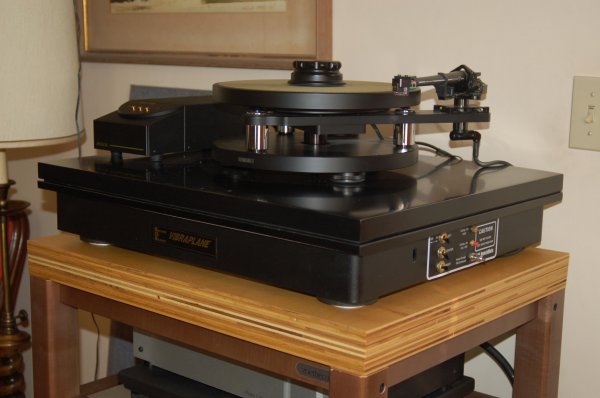
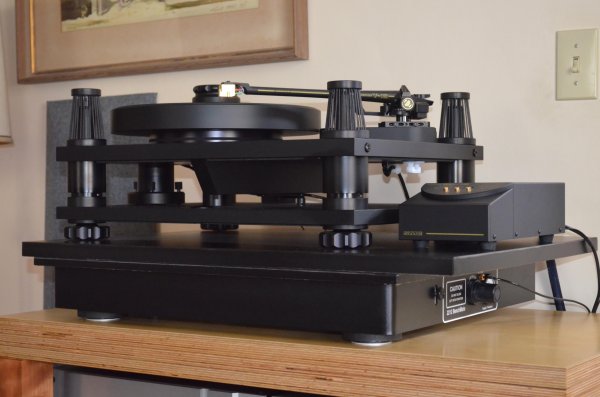
I currently own a Sme model 20/3 turntable and am seriously thinking of upgrading to a 30/12 has anyone heard the difference if so can they tell me more
Hello 108CY, I have not heard the SME Model 20/3. From what I have read in reviews and from owners, it certainly is an excellent turntable and approaches the performance of the Model 30 for a lot less money. My experience is with the Model 10 and V arm and with my new Model 30/12 with V-12 arm. I did some extensive comparisons between the two tables using the same cartridge and arm and then between the two different arms on the same turntable and with the same cartridge.
Though I am quite sure the 20/3 is much better than the Model 10, I presume that the Model 30/12 will be better than the 20/3 in terms of quietness, solidity and the ability to provide an unshakable foundation to the music. I think the sheer mass and ability to drain energy from the system is what gives this table its magic. The 30/12 provides a huge sonic picture and is able to articulate great dynamic contrasts. The silence between notes is incredible. This absence of sound then makes the introduction of music that much more startling and vivid. This is a quality that is very reminiscent of live orchestral music. Speed stability is superb as I imagine it is with the 20/3. My older Model 10 did not have adjustable speed, and this was an issue when I tried it with the motor controller of the 30/12. The 30/12 table, even with the SME 9" V arm, had a naturalness to it. It does not sound at all mechanical. jfrech remarked of his old 20/2 that it just sounded "right" to him. I have to agree with his comment.
Adding the 30/12 to my system was like going from a small, two-way mini monitor speaker to a three-way, four driver, floor standing speaker. The sound is larger, more extended, more impactful, BUT there is no loss of coherency. It is solid and seamless and sounds correct. This is what the 30/12 brought to my system: huge scale, increased dynamic contrast, increased extension and an unshakably solid foundation to the music.
Switching from the 9" to the 12" V arms caused a very different change to the sound. The longer arm sounds smoother and more transparent. There is increased detail and clarity. Small tonal nuance and spacial cues are more evident. Instruments and voices have more texture. There is just much more music and information. I suppose this is in large part a result of decreased distortion and tracking error due to the extra length. Imaging is more specific and sound radiates more naturally from the source, be it a voice or an instrument. Sound fills the space between instruments more completely and creates a more organic whole than the somewhat outlined images of the shorter arm. The sound is less flat and there is a better sense of harmonics. Upper frequencies don't have quite the energy that the 9" arm has. I guess I would say the details are less forced and sound more natural.
My good friend, Dr. Peter Poltun, the Director of Archives at the Vienna State Opera, has both an SME 30 and a 30/12. He has owned the former for 19 years with no problems. The only maintenance has been the annual addition of one drop of oil and an occasional replacement of a drive belt. The O rings are still original. One of the chief criticisms of SME tables is that they don't hold proper speed compared to direct drive tables and that the arms sound dull and dark. Dr. Poltun listens to live music daily and has never had this complaint. In fact, he knows many conductors and professional musicians who own SME tables and not one has ever complained to him about speed or pitch issues.
The 30/12 and V-12 compliment each other very nicely. They bring different strengths and combine to form a very believable musical presentation. The overall sound is more natural and less mechanical and I find myself forgetting about the system and just being washed over with music. I've owned the 30/12A for a year now and I continue to marvel at how it has improved my system.

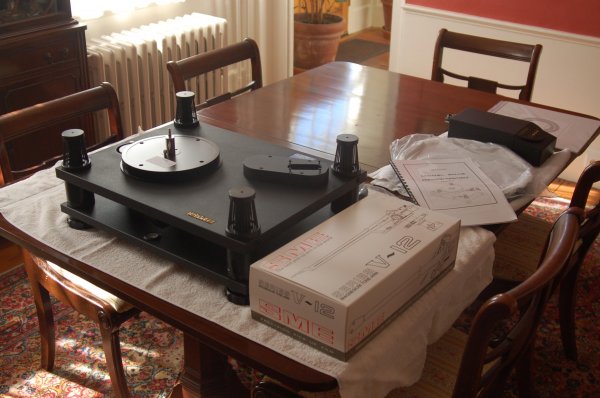
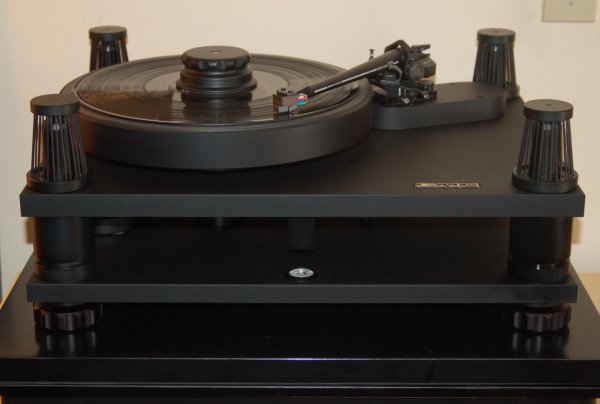
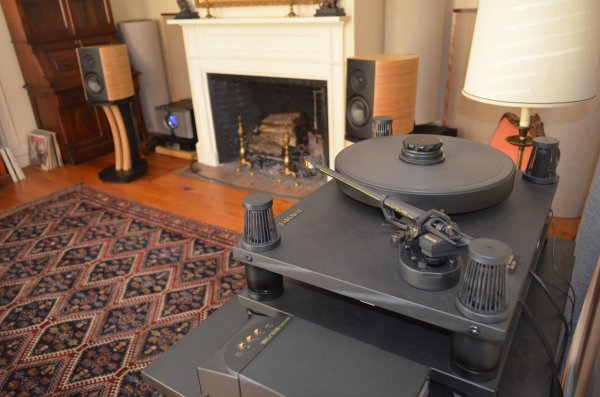
Last edited:
I currently own a Sme model 20/3 turntable and am seriously thinking of upgrading to a 30/12 has anyone heard the difference if so can they tell me more
108CY, Are you comparing the SME to any other tables? What more are you looking for in a turntable that you are not getting from the 20/3?
I currently own a Sme model 20/3 turntable and am seriously thinking of upgrading to a 30/12 has anyone heard the difference if so can they tell me more
I thought I would revive this thread and ask 108CY if he still has his SME 20/3? Are there any other SME owners out there who would like to join the discussion?
Michael Fremer just had another tour of the SME factory after the Munich show. He posted details on his Analog Planet website. There are a couple of nice videos showing production of some arms and turntables. It is all very impressive, but what strikes me as incredible is just how many turntables and arms this company produces. They must be selling them all.
My SME 30/12 has a serial number in the high sixties, so there must be quite a few of these out there, though there seems to be much more buzz about some other brands. There is a pretty long waiting list to get the bigger tables even though the company does not advertise much or demonstrate their products at the big audio shows.
I watched Fremer's SME tour, very interesting.
I gather they sell everything they produce and are backlogged on many items, thus they don't really care about reviews per se.
I think that they had a total of one SME 30/2 many years ago back in the day they sent around for reviews, and everybody had to wait for it, but that was a while ago when Fremer reviewed the SME 30/2 for Stereophile. SME claimed their customers were waiting for production tables, and the customers came first. Most of the SME reviews have come from Britain, and Ken Kessler has done several.
I gather they sell everything they produce and are backlogged on many items, thus they don't really care about reviews per se.
I think that they had a total of one SME 30/2 many years ago back in the day they sent around for reviews, and everybody had to wait for it, but that was a while ago when Fremer reviewed the SME 30/2 for Stereophile. SME claimed their customers were waiting for production tables, and the customers came first. Most of the SME reviews have come from Britain, and Ken Kessler has done several.
Last edited:
Very poor excuse to change turntables ... I know of SME's with more than 7 years old that never changed the suspension rings, and if you have to do it is a 20 minutes task - much less than five minutes per tower!
I bought my 20/2 (Serial# 618) used 9 years ago. It had it's original O rings, still does and still sounds superb!
I do see the possibility of moving up to a 30/12 at some future time, particularly if a well priced used one should present itself.My 30/12 is serial #40. I don't see myself ever changing turntables again.
Similar threads
- Replies
- 1
- Views
- 1K
- Replies
- 49
- Views
- 10K
- Replies
- 6
- Views
- 1K
| Steve Williams Site Founder | Site Owner | Administrator | Ron Resnick Site Owner | Administrator | Julian (The Fixer) Website Build | Marketing Managersing |







